Our feline companions are cherished members of our families, bringing us endless love and amusement.
However, just like any other animal, they can fall ill or get hurt. As responsible pet owners, it’s our duty to ensure their safety and wellbeing.
When cats suffer injuries, topical antibiotics are often necessary to prevent infections from taking hold. But the question remains: which antibiotic ointments are safe for cats?
The health and safety of our furry friends are paramount, and not all antibiotics will be suitable for them. It’s vital to choose an antibiotic ointment that is both safe and effective while also being approved by veterinary professionals.
In this blog post, we’ll explore various types of antibiotic ointments that are safe for cats and how to use them properly. We’ll also discuss common ailments your cat may experience and how to provide the right care.
So fasten your seatbelts as we embark on a journey to discover the safest and most effective antibiotic ointments that will keep your beloved cat happy and healthy.
Commonly Used Over-the-Counter (OTC) Antibiotic Ointments
When it comes to treating minor wounds and skin infections, over-the-counter (OTC) antibiotic ointments can be a popular choice.
These ointments contain active ingredients like neomycin, polymyxin B, and bacitracin that work together to promote healing and prevent bacterial growth. Neosporin and Polysporin are two commonly used OTC antibiotic ointments that are safe for use on cats.
These ointments contain neomycin, polymyxin B, and bacitracin, which work together to fight off bacteria and promote healing. However, it’s crucial to ensure that the ointment doesn’t contain any pain relief ingredients as they can be harmful to cats.
It’s also essential to note that while these OTC antibiotic ointments can be useful in treating minor wounds and skin infections in cats, they should not be used as a substitute for veterinary care if the wound or infection is severe or does not improve within a few days. Seeking veterinary care is always the best option if your cat’s condition worsens.
Other OTC antibiotic ointments that can be used on cats include Bacitracin, which only contains bacitracin without the other two active ingredients found in Neosporin and Polysporin. However, it’s important to note that not all OTC antibiotic creams approved for use on animals are safe for cats.
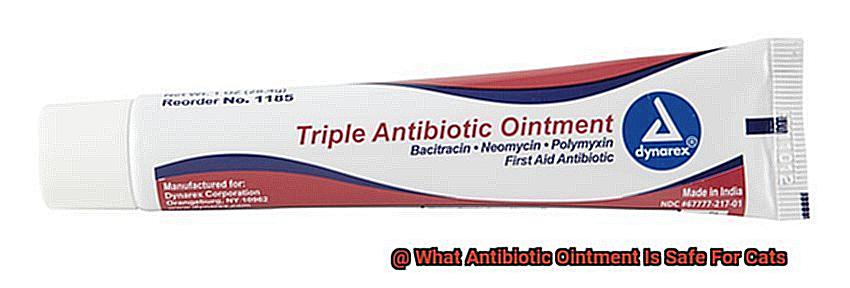
Using an inappropriate cream can result in allergies or even worsen your cat’s illness. In conclusion, Neosporin and Polysporin are the most commonly used OTC antibiotic ointments that are safe for use on cats.
Always seek veterinary care if your cat’s condition doesn’t improve within a few days or if it’s severe.
The Dangers of Using Triple Antibiotic Ointment on Cats
As such, it’s vital to understand the dangers of using triple antibiotic ointment on cats.
While this ointment is commonly used for humans, cats react differently to its active ingredients, including bacitracin, neomycin, and polymyxin B. Neomycin, in particular, can cause severe allergic reactions and skin irritations in cats, which can be fatal if left untreated.
Additionally, cats tend to lick or ingest anything on their fur or paws, including the ointment. This can lead to digestive disorders like vomiting and diarrhea, which can further complicate their condition.
Furthermore, even if your feline companion has no immediate reaction to the ointment, there is still a chance that they will develop an allergy over time. As a responsible pet owner, it’s best to avoid using triple antibiotic ointment on your cat altogether.

Fortunately, there are safe alternatives that are specifically formulated for felines. When your cat has a wound or injury, it’s essential to seek veterinary care immediately.
Your vet will be able to recommend the right antibiotic ointment that is safe for your cat and promotes healing without any harmful side effects. In conclusion, always prioritize your cat’s safety and wellbeing by avoiding triple antibiotic ointment unless prescribed by a veterinarian.
Instead, seek professional assistance in treating any injuries or wounds your cat may have.
Recommended Antibiotics for Cats
When it comes to treating bacterial infections in cats, antibiotics are often prescribed.
However, it’s crucial to remember that the use of antibiotics should only be considered under the guidance of a veterinarian. There are several antibiotics that can be used for cats, including penicillin, amoxicillin, and clindamycin.
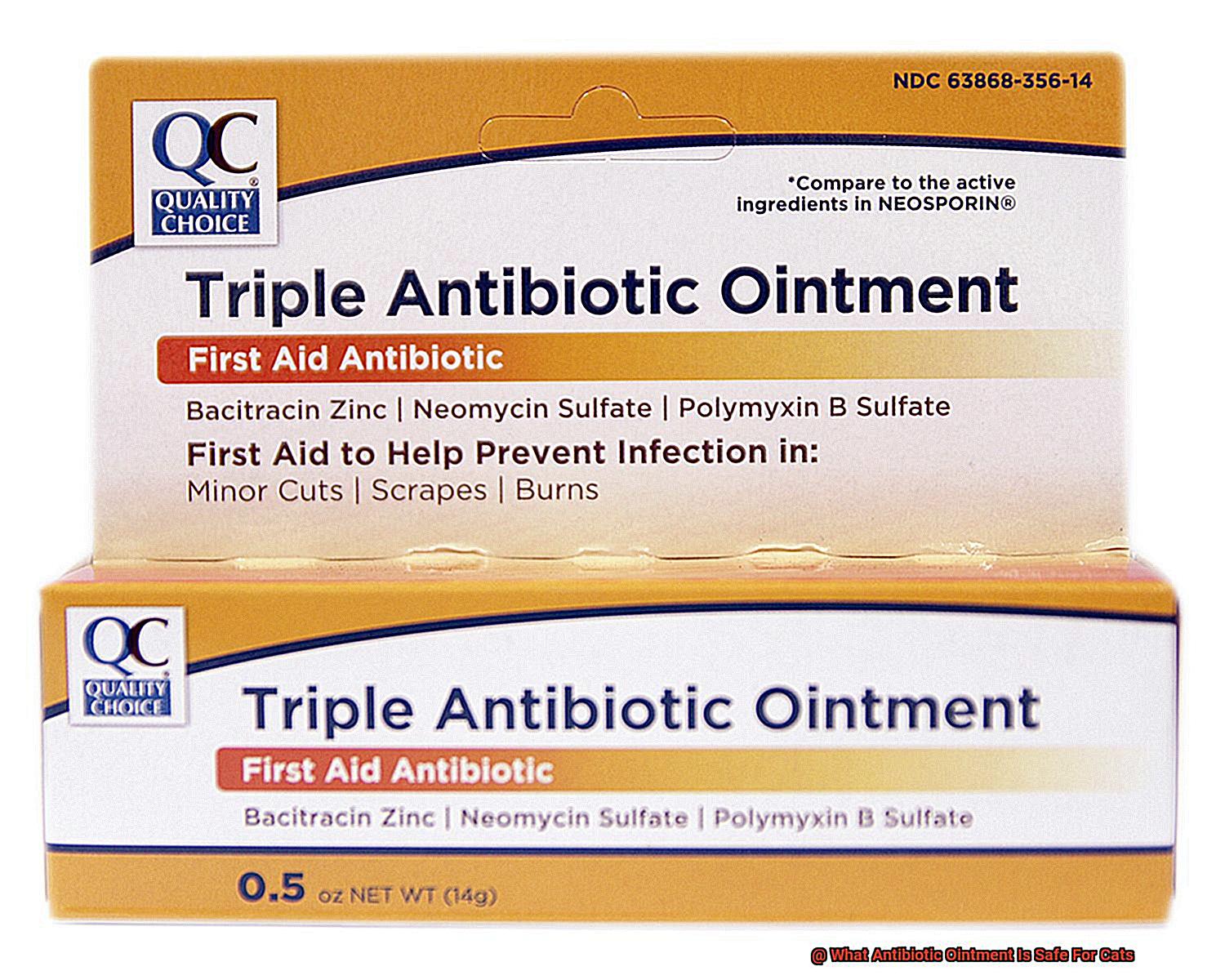
These antibiotics are effective in treating respiratory infections, skin infections, and urinary tract infections. In more severe cases or when dealing with resistant bacteria, cephalosporins and tetracyclines may be prescribed.
Still, it’s important to emphasize that a proper diagnosis and prescription from a veterinarian are necessary to ensure the safety and effectiveness of antibiotic treatment. Overuse or misuse of antibiotics can lead to antibiotic resistance and other health issues.
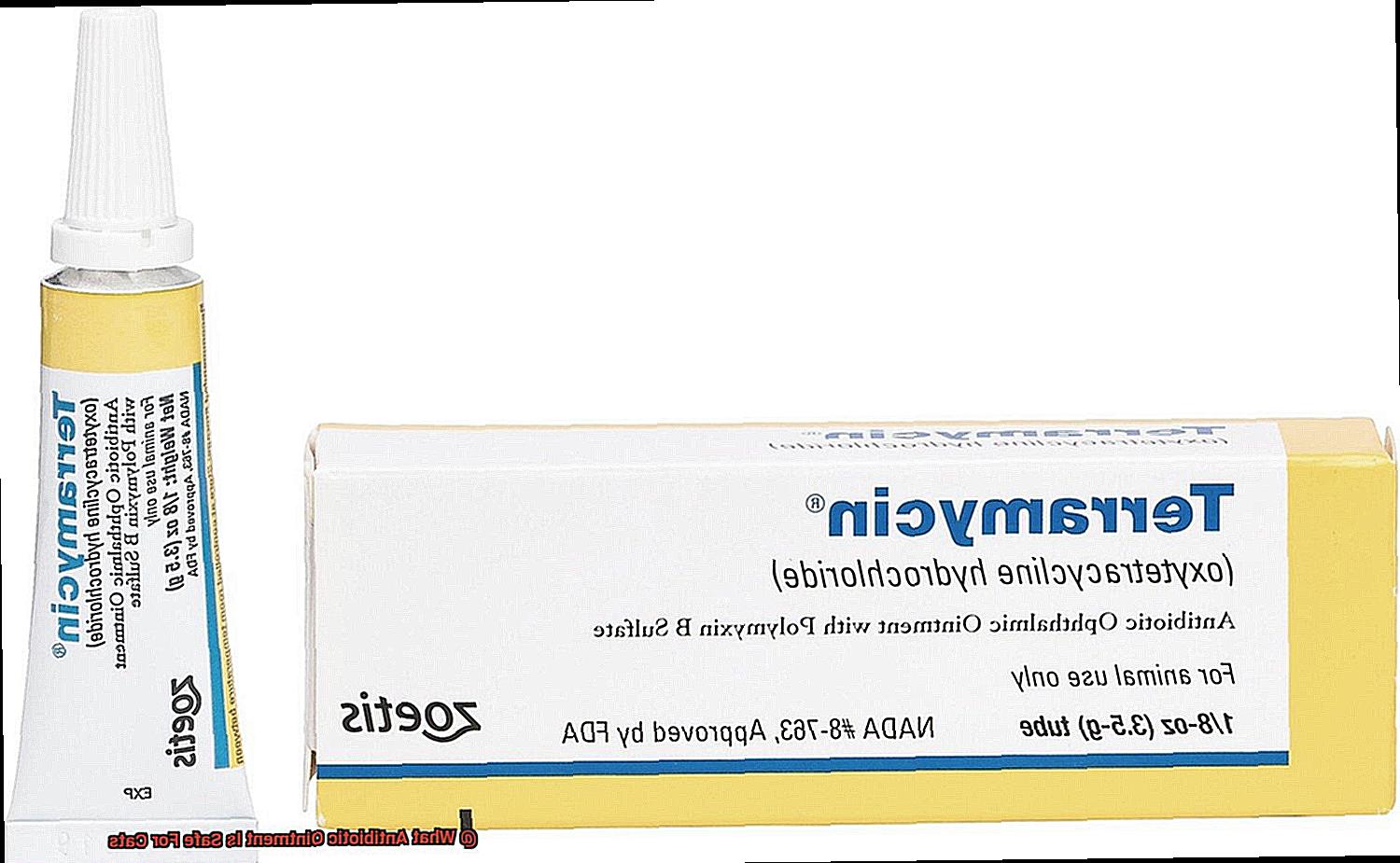
When administering antibiotics to your cat, make sure to follow the dosage and administration instructions provided by your veterinarian. This will help prevent any potential side effects or complications.
They can provide you with the proper diagnosis and prescription needed for safe and effective treatment.
Different Forms of Antibiotics Available for Cats
However, sometimes bacterial infections can creep up on your furry friend.
It’s important to have a basic understanding of the different forms of antibiotics available for cats. Think of antibiotics as the anchors that keep your cat’s ship steady as it sails through life.
Pills and capsules are the most popular types of antibiotics for cats. These medications are easy to handle and have a high success rate in treating infections.
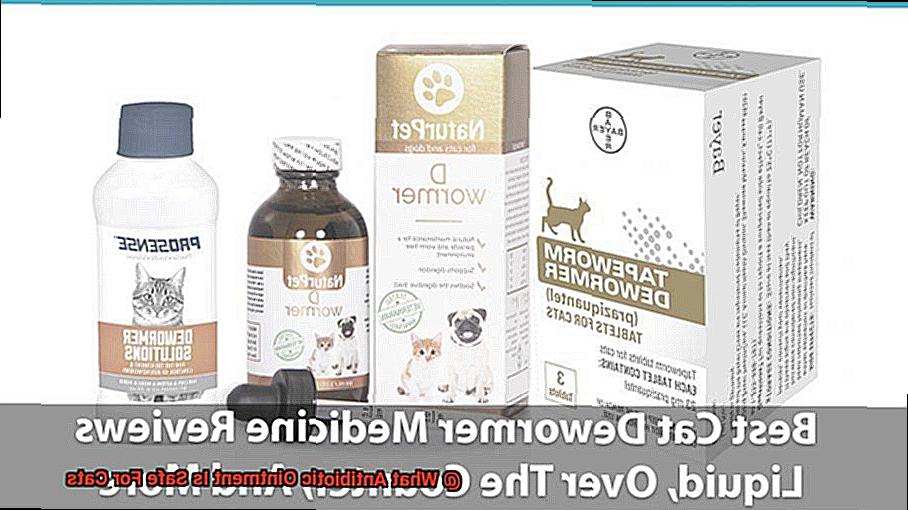
Liquid antibiotics are also available for cats that have trouble swallowing tablets or capsules. Simply mix these medications with your cat’s food to make it easier to ingest.
For bacterial infections on your cat’s skin or wounds, antibiotic ointments can be used. These ointments act like lighthouses that guide your cat back to health.
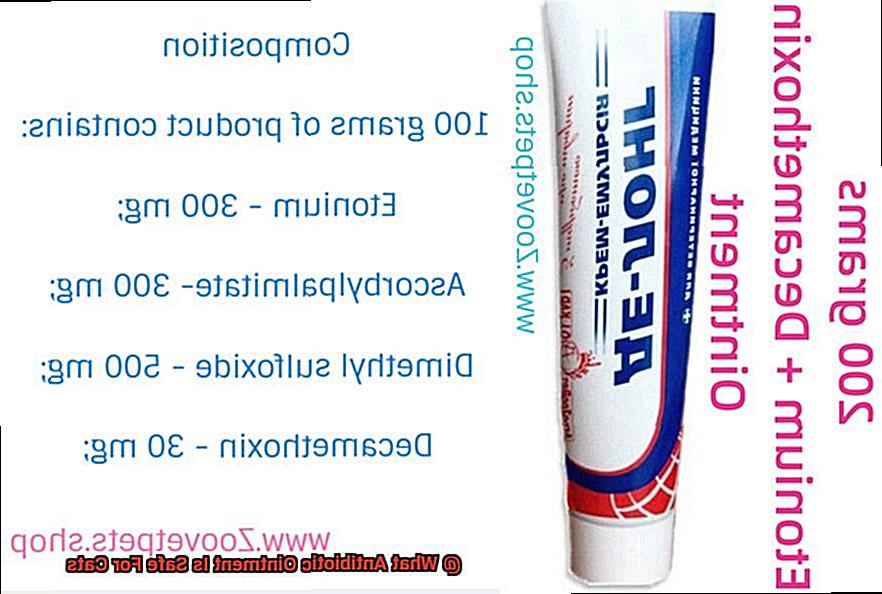
However, it’s crucial to use only antibiotic ointments formulated for feline use. Using human-grade ointments can cause allergic reactions and even be dangerous for cats.
It’s important to note that not all bacterial infections require antibiotics. Sometimes proper wound care and cleaning can resolve the issue without medication.
Always consult with your veterinarian before administering any medication, including antibiotics, to your pet. Think of your veterinarian as a compass that guides your cat’s health in the right direction.
In conclusion, there are various forms of antibiotics available for cats, including pills, capsules, liquids, and ointments. The type of antibiotic prescribed will depend on the severity of the infection and your cat’s overall health.
When using antibiotic ointments, it’s crucial to use products specifically formulated for feline use and not to use human-grade products without consulting a veterinarian first.
Considerations When Choosing an Antibiotic Ointment for Your Cat
However, choosing the right antibiotic ointment for your cat can be a daunting task.
It’s essential to keep several crucial considerations in mind to provide the best care possible. Firstly, before administering any medication, including topical ointments, consult with your veterinarian.
They will evaluate your cat’s individual health status and recommend the most appropriate course of treatment. Your vet’s expertise is like the anchor that keeps your ship afloat – rely on it.
When selecting an antibiotic ointment, consider the type of infection or wound you’re treating. Different bacteria require specific antibiotics, so select an ointment that targets the particular pathogens causing the infection.
It’s like using the right tool for the job – a hammer won’t work for every nail. Potential side effects or allergic reactions to certain ointments should also be taken into account.
Each cat is unique and may react differently to various drugs, so pay attention to any adverse reactions. Severe cases may result in skin irritation or even anaphylaxis, so be cautious.
Lastly, follow dosing instructions carefully and avoid overuse of antibiotics. Overuse can lead to antibiotic resistance and make future infections more difficult to treat.
Only use antibiotics when necessary and prescribed by a professional – it’s like using a fire extinguisher only when there’s a fire.
Tips to Ensure the Safety and Quick Recovery of Your Cat
In the unfortunate event that your cat is injured, it’s important to know how to help them on their road to recovery. Here are seven tips to guarantee the safety and quick recovery of your cat:
Keep the wound clean
The first step in treating any injury is to keep the affected area clean. Gently wash the wound with warm water and mild soap to remove any dirt or debris that may have entered it.
Apply antibiotic ointment
After cleaning the wound, apply a safe antibiotic ointment specifically designed for cats. This will help prevent infection and promote healing.
Monitor your cat
Keep a close eye on your cat after applying the ointment to ensure they don’t lick it off. This can cause more harm than good.
Keep your cat indoors
During their recovery period, it’s best to keep your cat indoors to prevent further injury or infection.
Provide a comfortable environment
Create a comfortable space for your cat to rest during their recovery period. This can include a cozy bed, plenty of water, and access to their litter box.
Follow up with your veterinarian
Regularly check in with your veterinarian to ensure that your cat is on track for a full recovery. They may recommend additional treatments or medications if necessary.
Know when to seek help
If you notice any changes in your cat’s behavior or their wound doesn’t seem to be healing properly, don’t hesitate to contact your veterinarian for assistance.
By following these tips, you can help ensure the safety and quick recovery of your beloved feline friend. Always consult with your veterinarian before administering any medications or treatments, and be sure to provide lots of love and support during this difficult time.
uMT8YC1qb88″ >
Conclusion
When it comes to treating injuries or preventing infections in cats, selecting the right antibiotic ointment is crucial. While over-the-counter options like Neosporin and Polysporin are generally safe for use on cats, it’s important to avoid triple antibiotic ointment as it can cause severe allergic reactions and other health issues.
Remember to always follow your veterinarian’s dosage instructions when administering antibiotics to your cat. It’s also essential to be aware of the various forms of antibiotics available for cats, including pills, capsules, liquids, and ointments.
When choosing an antibiotic ointment for your feline friend, consider the type of wound or disease you’re treating as well as potential side effects or allergic reactions. And before starting any medication or therapy, consult with your vet.
Keep a close eye on them during their recovery process and keep them indoors until they’re fully healed.







